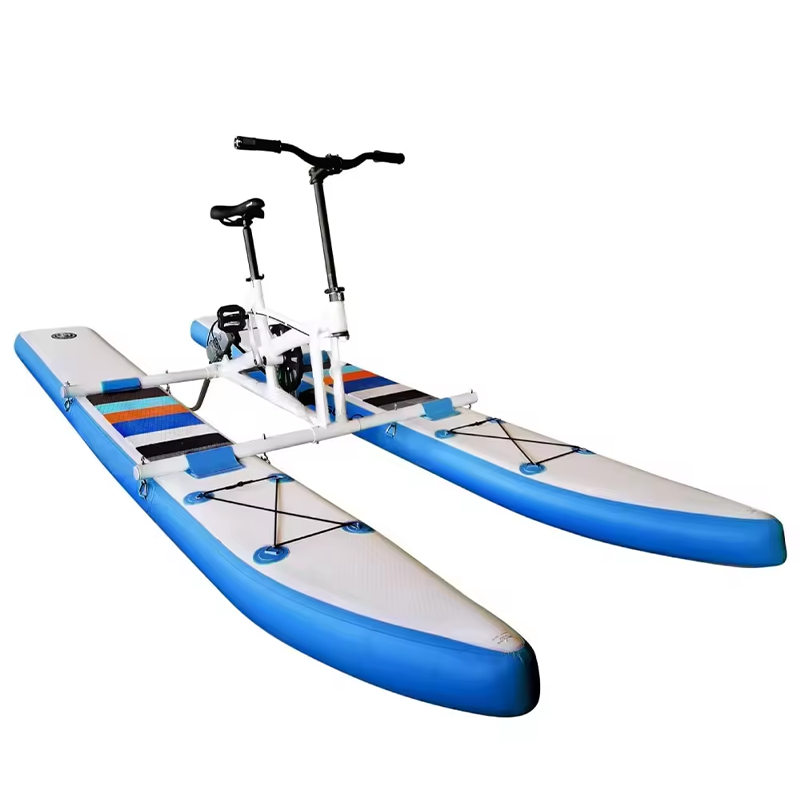The Critical Role of Flood Defense Strategies in Community Safety
Why Flood Defense Matters: Economic and Social Impacts
Flood defenses play a crucial role in safeguarding communities from the devastating economic and social impacts of flooding. Economically, floods can incur massive costs due to damages to infrastructure, loss of income, and long-term recovery expenses. For instance, flooding caused by Hurricane Dorian and Tropical Storm Imelda in 2019 led to damages amounting to $6.6 billion in the U.S., predominantly from flooding itself. This financial burden is further evidenced by the increasing debt of the National Flood Insurance Program, which stands at over $20 billion. Socially, floods cause loss of life and disrupt communities, leading to displacement and significant mental health repercussions. According to FEMA, densely populated areas face heightened risks, with recovery costs escalating in proportion to population density. Effective flood defenses, like those developed in Ortin, Washington, demonstrate how strategic interventions significantly reduce these economic and social burdens. Such protective measures ensure community safety by preserving life, maintaining access to resources, and enabling quicker recovery.
Lessons from Mangrove Ecosystems in Coastal Resilience
Mangrove ecosystems are natural barriers that provide vital flood defense, especially in coastal areas vulnerable to storm surges and tidal waves. A study from UC Santa Cruz highlighted the global flood protection services of mangroves, valued at $855 billion. Mangroves can reduce wave energy by up to 66%, showcasing their effectiveness in minimizing tidal impacts. This natural resilience not only shields communities but also promotes sustainable development and biodiversity. Conservation efforts, such as those led by the World Bank, enhance these ecosystems and offer significant benefits, including the protection of livelihoods and national economies. Collaborative initiatives between local governments and environmental organizations strive to preserve and restore mangrove habitats, thereby bolstering coastal resilience. As climate change heightens storm severity, investing in mangroves becomes a strategic choice for sustainable flood defense, ensuring both environmental and economic advantages for coastal communities.
Types of Flood Barriers for Home Protection
Doorway Flood Barriers: First Line of Defense
Doorway flood barriers serve as the initial shield against floodwater ingress, ensuring homes remain dry during flood events. These barriers are crafted from various materials, such as aluminum and stainless steel, each offering distinct levels of effectiveness and durability. Installation is typically user-friendly, needing only minimal equipment, which makes them accessible even for inexperienced homeowners. For instance, adjustable doorway flood barriers can be easily set up or taken down as needed, providing both convenience and robust flood defenses. According to a survey conducted by the National Flood Institute, these barriers can reduce floodwater penetration by up to 90%, significantly minimizing potential water damage costs.
Quick Dam Flood Barriers: Portable Solutions for Emergencies
Quick dam flood barriers present a flexible and immediate solution for flood emergencies, designed to be deployed rapidly when flooding is imminent. These barriers are lightweight and highly portable, allowing for swift setup, which is crucial during unexpected conditions. Key features include water-activated expansion that creates an effective seal against incoming water. These barriers have been notably effective in various urgent scenarios. For instance, during the 2023 floods in the Midwest, quick dam barriers were instrumental in protecting numerous homes while enabling compliance with regional safety standards. With certifications from relevant regulatory bodies, quick dam flood barriers are both reliable and efficient in emergency preparedness.
Permanent vs. Temporary Flood Barrier Systems
When choosing between permanent and temporary flood barrier systems, it's essential to weigh their cost-effectiveness against longevity and ease of use. Permanent systems, such as levees and floodwalls, are long-lasting and require substantial upfront investment and installation time. In contrast, temporary barriers offer flexibility and quicker setup but may need frequent replacements and maintenance. Local regulations often influence the choice between these options, as permanent systems might require more rigorous compliance procedures. Experts like Dr. Sandra Lee from the Flood Defense Research Center, suggest that while temporary barriers are suitable for areas with sporadic flooding, permanent systems are a more robust choice for regions experiencing regular flood threats, due to their enduring effectiveness in flood protection.
Leveraging Natural Defenses: Mangroves as Coastal Guardians
How Mangroves Reduce Flood Risks and Erosion
Mangroves play a crucial role in reducing flood risks and coastal erosion through their unique ecological functions. These resilient trees act as natural buffers, absorbing storm surges and stabilizing sediments, thereby mitigating the impact of waves during severe weather events. According to a study published in "Nature Geoscience," mangroves can reduce wave height by up to 66%, substantially decreasing the risk of coastal flooding. Additionally, these habitats contribute significantly to carbon sequestration, helping mitigate climate change impacts that exacerbate flooding. Environmental organizations like the International Union for Conservation of Nature (IUCN) highlight that maintaining healthy mangrove ecosystems is essential for sustainable coastal defense strategies, as these natural barriers protect coastal communities and ecosystems from rising sea levels and intense storms.
Global Case Studies: Vietnam, Bangladesh, and Beyond
Countries like Vietnam and Bangladesh have effectively integrated mangroves into their flood defense systems, providing valuable case studies for global emulation. In Vietnam, the government has successfully implemented projects that promote the restoration and expansion of mangrove forests along its coastlines, enhancing resilience against typhoons and tidal waves. Similarly, Bangladesh's coastal afforestation initiatives have strengthened its ability to withstand storm surges, resulting in reduced damage during cyclonic events. Experts like Dr. Nguyen Van Ty, a renowned Vietnamese environmental scientist, emphasize that these strategies not only protect infrastructure but also foster biodiversity and support local livelihoods. Lessons from these countries underscore the scalability of incorporating mangroves into flood defense, offering a sustainable approach for other coastal nations seeking to bolster resilience against climate-induced challenges.
Balancing Conservation with Urban Development
Integrating mangrove conservation with urban development presents significant challenges but also opportunities for innovation in coastal regions. As cities expand into coastal zones, strategies such as the implementation of zoning laws and the establishment of protected areas have been crucial in preserving these vital ecosystems. Urban planners and environmentalists advocate for a balanced approach that recognizes the symbiotic relationship between development and conservation. For instance, studies indicate that urban areas adjacent to healthy mangrove ecosystems benefit from enhanced natural flood defenses and improved air quality. Fostering this balance involves collaboration across sectors to create policies that safeguard mangroves while accommodating urban growth, thereby ensuring sustainable development and long-term environmental protection in coastal communities.
Community-Level Infrastructure: Levees and Floodwalls
Design Principles for Effective Flood Barriers
Designing effective flood barriers requires careful consideration of several key principles. First and foremost, material selection and structural integrity are crucial to ensure reliability and longevity. Engineers often recommend using reinforced concrete or steel for levees and floodwalls to withstand significant water pressure. Proper drainage systems are equally important as they prevent water accumulation, reducing the risk of barrier failure. Maintenance is vital as well, ensuring that barriers remain functional over time. According to engineering experts, consideration during the design phase often involves analyzing soil characteristics and hydrological patterns to optimize barrier performance. Successful levee systems, such as those employed in the Netherlands, have demonstrated remarkable resilience during severe flooding events by adhering to these design principles.
Integrating Natural and Engineered Systems
The concept of hybrid systems offers innovative solutions by integrating natural defenses like wetlands with engineered flood barriers. This combination delivers multiple benefits, including increased resilience and biodiversity protection. Wetlands contribute to flood mitigation by absorbing excess water, thus reducing the pressure on engineered systems. Examples abound of communities effectively employing such synergy—Belle Chasse, Louisiana, showcases effective integration where wetlands play a crucial role alongside levees in flood protection. Data from studies indicate improved outcomes in flood mitigation when natural and engineered solutions are combined, such as reduced environmental impact and enhanced ecosystem support. Such hybrid systems are increasingly recognized for their effectiveness and sustainability, offering a comprehensive approach to flood management.
Innovations in Flood Defense Technology
Smart Flood Barrier Systems for Urban Areas
Smart flood barrier systems represent a cutting-edge approach in urban flood defense, leveraging technology such as the Internet of Things (IoT) to enhance performance and responsiveness. These systems utilize sensors and real-time data analytics to predict flood events accurately and deploy barriers effectively, ensuring timely intervention. In cities like Rotterdam and Tokyo, such technology has significantly reduced flood risks, showcasing the potential of smart flood barriers. Experts predict that future developments will see more integration of AI and machine learning, leading to fully autonomous systems capable of anticipating and reacting to environmental changes swiftly.
Adapting Climate-Resilient Strategies for the Future
Climate change is reshaping flood defense strategies, necessitating adaptability to combat increasingly severe flooding events. Innovative strategies are emerging globally, focusing on resilience and sustainable development. Governments, NGOs, and research institutions are collaborating to create robust frameworks that enhance preparedness and response effectiveness. For example, the Netherlands has implemented adaptive measures such as the Room for the River program, which improves flood management and ecological preservation. As echoed by recent climate reports, these strategies are vital for future resilience, emphasizing the need for continued adaptation in flood defense approaches.








 Hot News
Hot News
